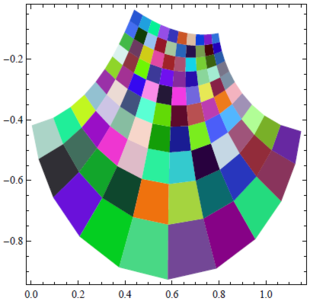|
|
| Line 137: |
Line 137: |
|
\end{pmatrix} |
|
\end{pmatrix} |
|
+ c_3 |
|
+ c_3 |
|
\begin{pmatrix} |
|
|
1 & 1 \\ |
|
|
0 & 0 \\ |
|
|
\end{pmatrix} |
|
|
= 0 |
|
|
\begin{pmatrix} |
|
|
1 & 0 \\ |
|
|
-1 & 0 \\ |
|
|
\end{pmatrix} |
|
|
+ 1 |
|
|
\begin{pmatrix} |
|
|
0 & 1 \\ |
|
|
0 & 1 \\ |
|
|
\end{pmatrix} |
|
|
+ 1 |
|
|
\begin{pmatrix} |
|
|
1 & 1 \\ |
|
|
0 & 0 \\ |
|
|
\end{pmatrix} |
|
|
=</math> |
|
|
|
|
|
:::::<math> |
|
|
\begin{pmatrix} |
|
|
0 & 1 \\ |
|
|
0 & 1 \\ |
|
|
\end{pmatrix} |
|
|
+ |
|
|
\begin{pmatrix} |
|
\begin{pmatrix} |
|
1 & 1 \\ |
|
1 & 1 \\ |
Welcome to Math 240!
(additions to this web site no longer count towards good deed points)
|
| #
|
Week of...
|
Notes and Links
|
| 1
|
Sep 8
|
About This Class, What is this class about? (PDF, HTML), Monday, Wednesday
|
| 2
|
Sep 15
|
HW1, Monday, Wednesday, TheComplexField.pdf,HW1_solutions.pdf
|
| 3
|
Sep 22
|
HW2, Class Photo, Monday, Wednesday, HW2_solutions.pdf
|
| 4
|
Sep 29
|
HW3, Wednesday, Tutorial, HW3_solutions.pdf
|
| 5
|
Oct 6
|
HW4, Monday, Wednesday, Tutorial, HW4_solutions.pdf
|
| 6
|
Oct 13
|
No Monday class (Thanksgiving), Wednesday, Tutorial
|
| 7
|
Oct 20
|
HW5, Term Test at tutorials on Tuesday, Wednesday
|
| 8
|
Oct 27
|
HW6, Monday, Why LinAlg?, Wednesday, Tutorial
|
| 9
|
Nov 3
|
Monday is the last day to drop this class, HW7, Monday, Wednesday, Tutorial
|
| 10
|
Nov 10
|
HW8, Monday, Tutorial
|
| 11
|
Nov 17
|
Monday-Tuesday is UofT November break
|
| 12
|
Nov 24
|
HW9
|
| 13
|
Dec 1
|
Wednesday is a "makeup Monday"! End-of-Course Schedule, Tutorial
|
| F
|
Dec 8
|
The Final Exam
|
| Register of Good Deeds
|

Add your name / see who's in!
|

|
|
Boris
Elementary and (Not So Elementary) Errors in Homework
(1) Bad Notation
Let  be matrices.
be matrices.
We want to equate  to the set of all symmetric
to the set of all symmetric  matrices. Here is the wrong way to write this:
matrices. Here is the wrong way to write this:
 .
.
Firstly,  is the set of all linear combinations of
is the set of all linear combinations of  . To equate it to a single
. To equate it to a single
symmetric
 matrix makes no sense. Secondly, the elements
matrix makes no sense. Secondly, the elements  are undefined. What are they suppose to
are undefined. What are they suppose to
represent? Rational numbers? Real numbers? Members of the field of two elements? The following way of writing erases those issues:
 where
where  is an arbitrary field.
is an arbitrary field.
(2) Algorithm vs. Proof
When solving a problem that requires a solution to a linear equation, it is not always obvious if you should show:
- a) An algorithm for finding the solution
- b) A proof that a solution is correct
If the problem asks to solve a linear equation, then just show (a). Otherwise, for problems such as this:
Determine if the vector  is a linear combination of the vectors
is a linear combination of the vectors  in
in  .
.
Show both (a) and (b) to be on the safe side.
Problem 5h) in Homework 3 for all Fields
For an arbitrary field  , determine if the matrix
, determine if the matrix
 is in span
is in span
 .
.
Proof:
We show that
 .
.
- We show that
 .
.
- Assume that
 .
.
- Let
 .
.
- Then
 .
.
- Then
 .
.
- Since
 and the entries of the matrix are from
and the entries of the matrix are from  , then
, then  .
.
- Then
 .
.
- Then
 .
.
- We show that
 .
.
- Assume to the contrary that
 .
.
- Then
 .
.
- Then this system of linear equations has a solution:



 .
.
- When solving this system, we see that it has no solution.
- This contradicts the assumption that it has a solution.
- Then
 .
.
- Then
 . Q.E.D.
. Q.E.D.
A Field Problem
A Dimension Problem






























